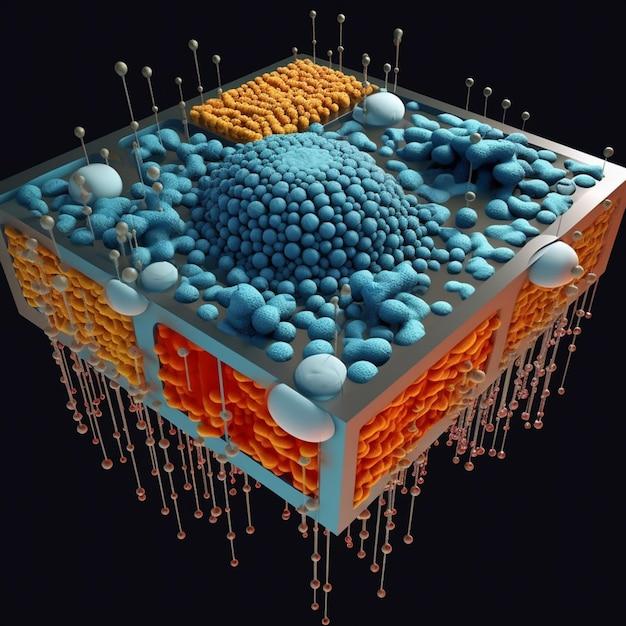Friction is an everyday concept that most of us have experienced in some way or another. Whether it’s the resistance we feel when trying to slide a heavy object across the floor or the grip our shoes have on the ground, friction plays a crucial role in our daily lives. But have you ever wondered what exactly friction is and how it affects the movement of objects?
In this blog post, we will explore the three key effects of friction and provide easy-to-understand explanations for concepts like rolling friction and static friction. Whether you’re an eighth-grader trying to ace your science test or simply curious about the science behind everyday occurrences, this article will provide you with the knowledge you seek. So, let’s dive in and unravel the mysteries of friction together!

What Are the Three Effects of Friction
Friction – it’s like that annoying person who always seems to get in the way of your plans. But did you know that friction actually has three distinct effects? Yes, three! So buckle up and get ready to dive into the fascinating world of friction and its marvelous consequences.
The Battle of Stability vs. Motion
Friction, my friends, plays a vital role in deciding whether an object stays put or starts moving. You see, when two surfaces come into contact, friction acts like a formidable opponent, trying to hold things back. It’s like that super glue you accidentally spill on your fingers, making it a real struggle to let go of anything. But fear not, for without friction, life would be a slippery slope – literally. Thanks to the first effect of friction, we can maintain a stable foothold on this crazy planet.
The Heat is On!
Friction isn’t just a killjoy; it also knows how to heat up the party. Literally. When objects rub against each other, friction generates heat like a fiery salsa dancing competition. The intense battle between surfaces converts kinetic energy into thermal energy, causing temperatures to rise. So next time you’re rubbing your hands together because it’s chilly outside, thank friction for lending a warm hand. Just make sure you don’t overdo it and end up with burnt fingers. Ouch!
Bringing Things to a Stop
Imagine you’re cruising down the road in your fancy new car, feeling like the king of the world. Suddenly, you spot a red light up ahead. What comes to the rescue? Friction, my friend! As you press down on the brakes, the brake pads create friction against the wheels, gradually reducing the car’s speed. It’s like a secret superhero, saving the day by bringing things to a safe and controlled stop. So the next time friction slows you down, remember it’s just doing its job, ensuring you don’t crash into things like a bull in a china shop.
Friction, with its three effects, keeps our world in balance. Whether it’s preventing us from slipping on banana peels or allowing our cars to stop safely, friction is like that always-reliable friend who’s got your back. So let’s give a round of applause to this force of nature that keeps things stable, heats things up, and slows us down when needed. Without friction, life as we know it would be a whole lot more chaotic. So embrace the friction, my friends, and let it guide you on the exhilarating journey through the twists and turns of life.
Stay tuned for more friction-filled adventures!
Keywords: effects of friction, stability vs. motion, heat generation, braking mechanism, force of nature

FAQ: What are the Three Effects of Friction
Last Updated: September 2023
What is Rolling Friction? Easy Definition
Rolling friction is the force that resists the motion of a rolling object, such as a ball or a wheel. It occurs when an object rolls over a surface, creating resistance that opposes its movement. Imagine trying to push a flat tire uphill – that’s rolling friction in action!
What Are the Three Effects of Friction
Friction, the force that occurs when two surfaces come into contact, brings about a multitude of effects. Here are the three main outcomes of friction you should know about:
1. Heat Generation: Friction Can Get Hot, Hot, Hot!
When objects rub against each other, they can get quite steamy – quite literally! The friction between two surfaces creates heat energy, causing them to warm up. Think about the warmth you feel when you rub your hands together vigorously. Friction transforms mechanical energy into thermal energy, resulting in those cozy, toasty hands on a cold winter day.
2. Slowing Down: Friction Puts on the Brakes!
Friction is like the ultimate frenemy. While it allows us to grip surfaces and maintain control, it also has a sneaky way of slowing things down. When two objects slide against each other, friction acts in the opposite direction of the desired motion, reducing speed and bringing things to a halt. That’s the force behind the screeching brakes of a car or the reason your bike eventually comes to a stop when you stop pedaling.
3. Limited Motion: Friction Puts a Cap on It!
Friction can be like the annoying traffic cop of the physics world – it loves to restrict motion. When two surfaces come into contact, the frictional force opposes the applied force, making it harder for objects to move. This is particularly evident in situations where you’re trying to slide something on a rough surface – like trying to push a table with its legs stuck in a sandy patch at the beach. Without friction, everything would slide around like ice on a skating rink!
What is Static Friction in Simple Words
Static friction refers to the resistance experienced by an object when you try to move it while it’s at rest. It’s like the lazy cat that refuses to budge from its cozy spot on the couch. Static friction keeps objects in place until an external force overcomes it. Once you apply enough force to surpass the static friction threshold, the object will start moving. So, next time you struggle to rearrange your heavy furniture, you can blame it on static friction giving you a tough time.
What is the Effect of Friction on a Moving Object
Friction may act as a spoiler for your beloved moving object. When an object is already in motion, friction opposes its movement, reducing its speed over time. This effect is evident in various situations, like a car’s tires gradually slowing down on a road, or the way a bowling ball eventually comes to a stop after it leaves your hands. Remember, friction is like a silent force that’s always trying to put a damper on things!
Which Friction is Maximum
Among the various types of friction, the one with the most oomph is called sliding friction. This frictional force comes into play when two solid surfaces slide against each other, causing an opposing force. The resistance encountered during sliding friction is usually greater than that experienced in other types of friction, such as rolling or fluid friction. Think of it as trying to slide across a carpeted floor in your socks – it’s not as smooth sailing as gliding on an ice rink!
What is Friction for 8th Class
In 8th-grade physics, you’ll become quite the friction aficionado! Friction is a fundamental concept you’ll explore extensively, studying its various types, definitions, and effects. You’ll dive into the exciting world of forces, understanding how friction affects motion and energy transfer. Get ready to roll up your sleeves and embark on the thrilling adventure that is the study of friction!
Remember, friction is like the ultimate sidekick in the physics universe. It creates heat, slows things down, limits motion, and generally keeps things interesting. Understanding the effects of friction allows us to better comprehend the world around us, from the brakes in your car to the seemingly mundane act of walking. So, the next time you feel friction at work, you can appreciate all the interesting things it brings to the table!
